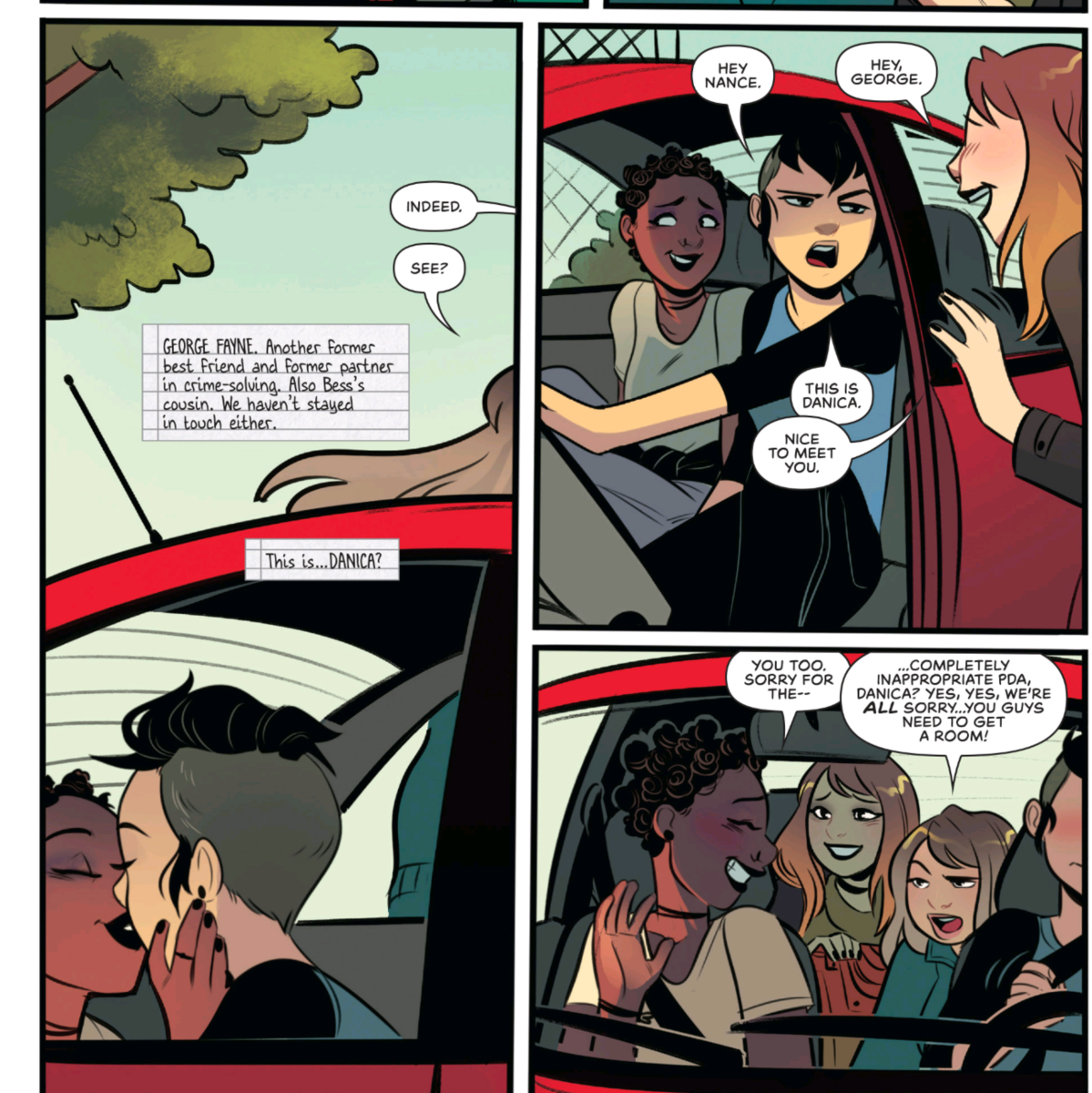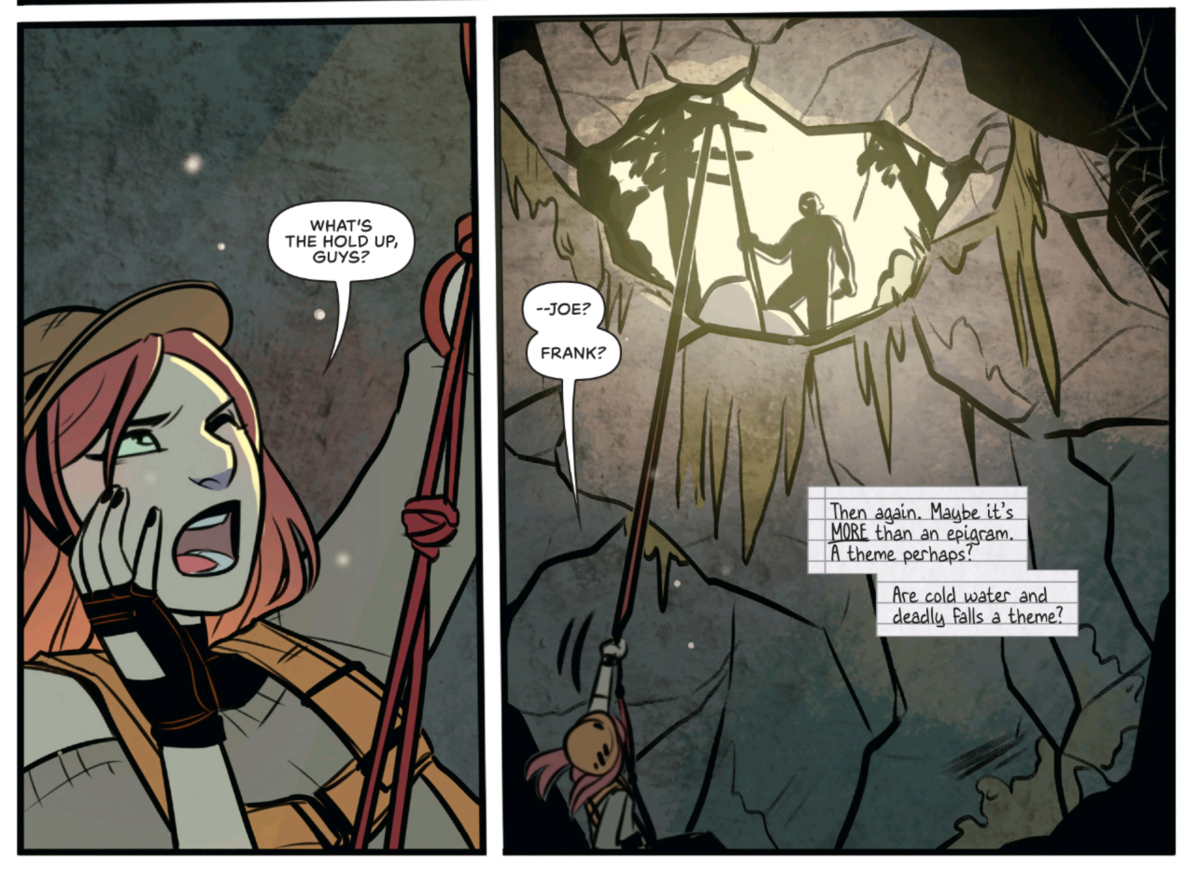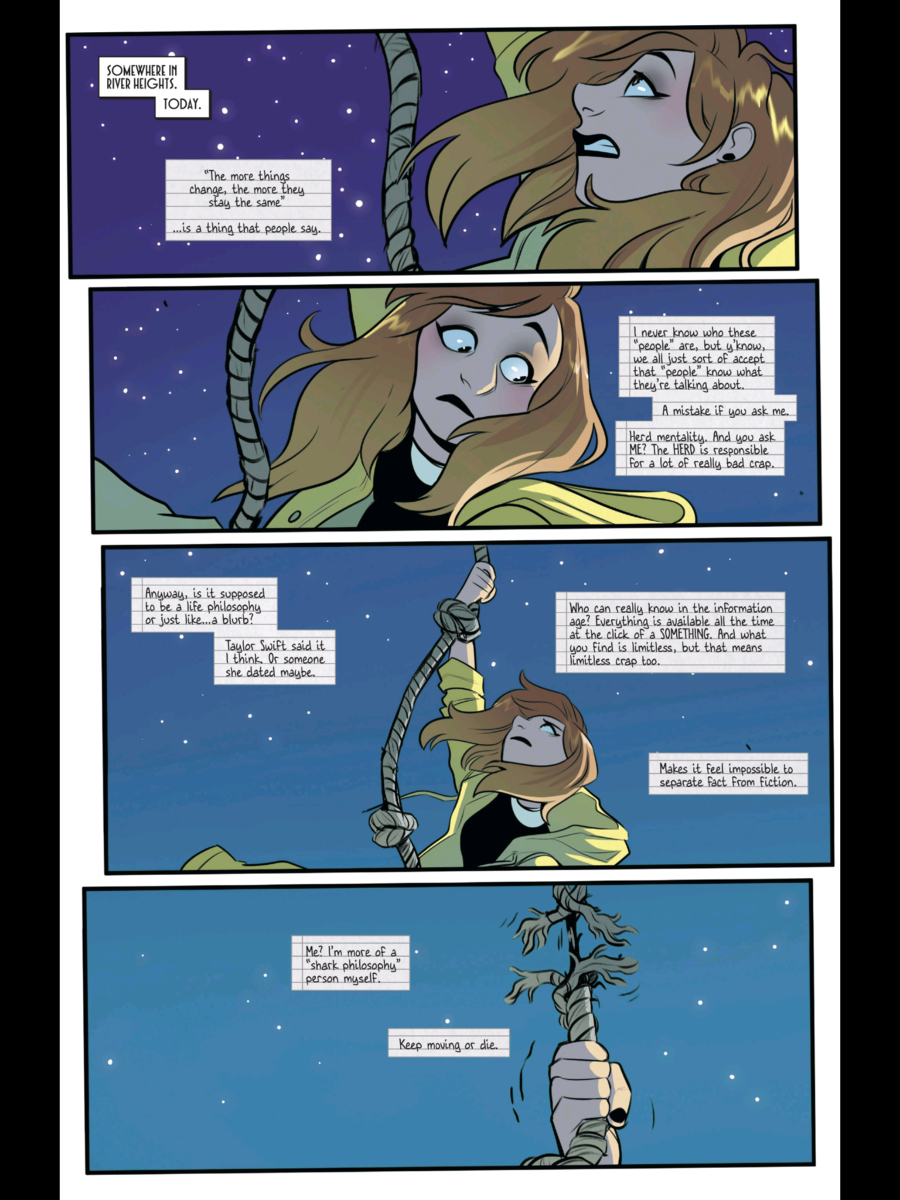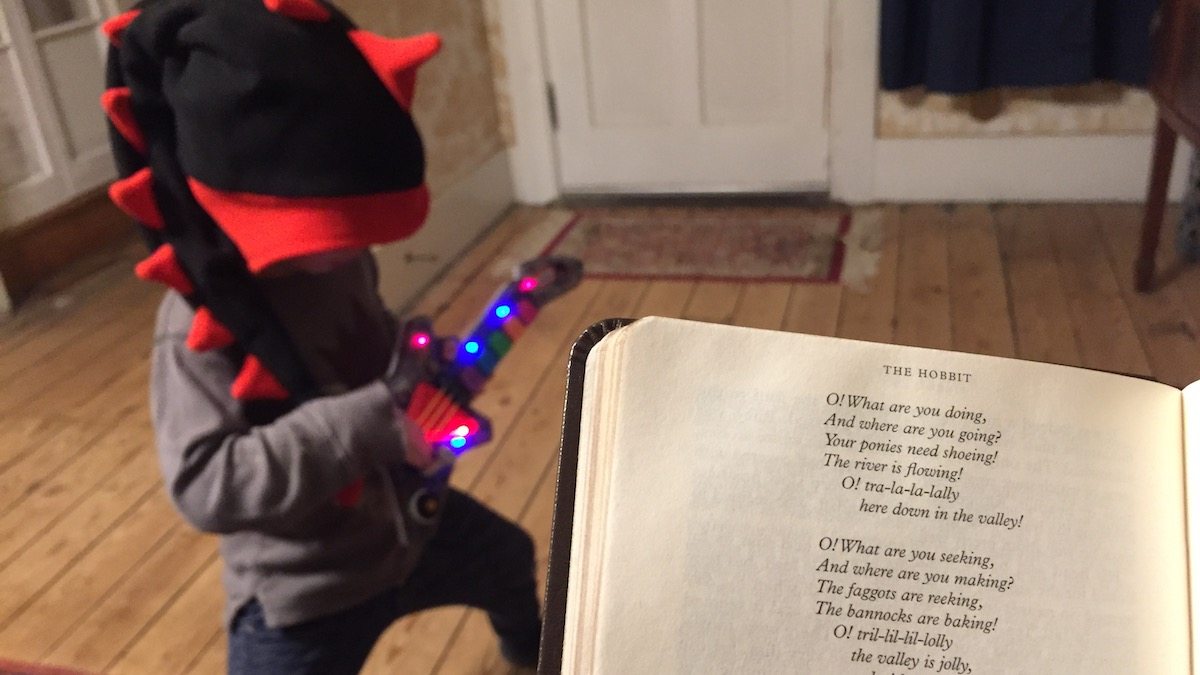
Between the new Nancy Drew comic series that released this week and Goldie Vance Volume 4 that came out a few weeks ago, I am in teen girl amateur sleuth heaven.
Let’s get my personal biases out of the way here: I’ve loved Kelly Thompson’s work since I read Hawkeye: Kate Bishop. I’ve loved Jenn St-Onge since I saw her drawing Jem and the Holograms: Infinite. And I’ve loved Nancy Drew since I was eight years old.
Seeing this team combined in Dynamite’s new Nancy Drew comic mini-series gave me the kind of thrills that cause bouncing and squealing. But as excited as I was, this book was going to have to clear a pretty high bar for me; the last two decades of Nancy Drew adaptations have kind of sucked. I had to hope that this team would see in Nancy what I did and that they could bring it to the page in a way that was updated without leaving behind the characteristics that made Nancy awesome.
They have done that, and a hell of a lot more.
I devoured this first issue, and am living for the rest of the series. I initially got a review copy of the book, but I bought my own copy the second I could, and I have subscribed to the series. I will also be buying the trades unless something seriously changes.
Credits:
- Writer: Kelly Thompson
- Artist: Jenn St-Onge
- Colorist: Triona Farrell
- Letterer: Ariana Maher
- Covers: Tula Lotay, Marguerite Sauvage, Annie Wu, and Jenn St. Onge
The History of Nancy Drew
Nancy Drew, girl detective, has existed in several different incarnations over the last century or so, but her basic story has been constant. As the female counterpart to the Hardy Boys, Nancy is a kind of teenage Miss Marple. She solves mysteries that put her in just enough danger to make you nervous but not so much that you have nightmares. Her friends Bess and George accompany her on many of her adventures, and they are occasionally joined by Nancy’s sometimes boyfriend Ned.
Nancy Drew has been updated over the years; the earliest volumes were literally rewritten to inculcate modern girls with a more appropriate set of values for the time. Her original characterization was spunky and sassy; she was later made more demure and sweet (and, to be honest, a lot of racism was edited out). Later on, Nancy was aged up a bit and given romantic subplots. More recently, Scholastic aged Nancy down and gave her preteen style mysteries to solve. None of these series gained much attention, and all of them were eventually canceled.
I have a lot of important memories of reading and rereading Nancy Drew books as a kid, and I remember how important the characters were to me. Not just Nancy, who was kind of overly perfect sometimes, but Bess – the heavy-set best friend – and George – the “tomboy” character that fans have read as queer and sometimes trans for many years – felt special and important. When the new comic series by Thompson and St-Onge was announced, there was a general feeling that the reboot had better be “queer as hell.”
Good news, friends; it so is.

The Story Of Nancy Drew #1
A single issue doesn’t give me a ton of story to talk about, but I like what I’m seeing here so far. The old Nancy books take place in Riverview Heights, and that’s where Nancy is at the beginning of the issue. She has a team of people helping her play amateur sleuth, and I like the behind-the-scenes Birds Of Prey style organization they have.
The book starts with a somewhat madcap adventure as Nancy rescues a school mascot, Mr. Goatington, and confronts the kid responsible for disappearing him. She connects with her behind the scenes crew Birds of Prey style and then is interrupted as she finds a letter sent from her old hometown. The letter is written with cut out magazine words, and it references the murder of Nancy’s mother. “What would your mother say if she was alive to say it, Nancy Drew?”

Nancy immediately heads back to Bayport, where she reconnects with Bess and George, who have mixed feelings about her return. We find out that after Nancy left seven years ago, she hasn’t kept in touch with her friends at all. Bess is willing to forgive and dive back into the mystery; George is more reluctant.
Nancy tells them about the mysterious letter; the team immediately reaches out to Joe and Frank Hardy (yes, the Hardy Boys – because why not?) to check out something about the caves at nearby cliffs – where, in true adventure serial style, we are left on a cliffhanger. A cliff faller, in this case. But still

No sign of Ned yet, and frankly, I’m okay with that.
The Art of Nancy Drew #1
I knew the art in this book was going to be a huge make it or break it deal for me.
Recent adaptations of Nancy have left her either a preteen or an adult femme fatale, and neither of those incarnations interests me at all. My favorite Nancy is the one written in the 1930s and 40s, the plucky teenager who is smart enough to get herself into trouble – and out of it. The art gave me exactly what I needed here. The characters are drawn with the soft, rounded style I’m used to seeing in Jem (which makes sense, since Jenn St-Onge worked on the Misfits spin-off series, as well as the 400 Misfits issues of the Jem and the Holograms: Infinite miniseries), but they never lack expressiveness or personality. Bess is given a soft, physically round body type, while George is leaner. Bess has long hair that is carefully styled while George’s hair has been shaved on the sides and back.
I absolutely adored the art in this book; not just the actual images themselves, but the presentation and framing. In the initial frames of the story, you see Nancy with a rope; you then see that Nancy is clearly hanging from the rope one-handed; you see that the rope is starting to fray with and have the perspective that looks like she is a long way up.

Then in the next panel, you see that all of these things are true – but Nancy is about ten feet up from a lake, with a goat chewing on her leg. This is complemented by the narration, which helps keep the situation in that semi-serious realm, rather than having the ultra-noir that would push her towards the Veronica Mars incarnation of Nancy Drew. The situation moves from threatening to silly in a couple of pages, but keeps me engaged and entertained.
Instead of the lettering contained within standard bubbles, Nancy’s inner thoughts and reflections are presented in square boxes that are lined like school notebook paper. This gives the book something of a “case files” feel – as if Nancy is reflecting on the action after the fact. As a writer, I will say that the book ‘cheats’, intermingling past and present tense for Nancy’s thoughts as needed. But it’s not obvious cheating, and honestly, that’s all I really need.
The one piece of artwork that truly confused me was the cover. Don’t get me wrong; I love the cover of this comic. The characters look badass, punky, and modern. They are reminiscent of the way Nancy was drawn in the old yellow hardbacks that I grew up on. It makes the book feel a little aged up – which is appropriate since I would give this book to a slightly older kid than I would Goldie Vance. This is an amazing cover.
It is absolutely not representative of the art style in the book.
Jenn St-Onge’s looser, softer style diverges sharply from the strongly realistic art on the book’s cover. Two variant covers exist, but from the interior credits, I’m not sure who drew what cover; frankly, I didn’t care for any of them. I can live with this hyper-realistic style if they stick with it, but I’d like to see art that more closely matches the interiors.
Wrapping Up The Case
When I heard about Nancy Drew #1, I was excited and eager to read what would happen when two of my favorite creators got together, but that’s not the same as being easy to impress. I love the Nancy Drew I read when I was a kid, and every incarnation since has been inferior to me. So when I say I love this comic, and I will be reading every single issue and then buying every trade as it comes out, I want you to understand what that means to me. This is the first time I’ve seen my sassy, spunky, adventurous Nancy on the page in thirty years, and I’m convinced that the team on this book loves my Nancy just as much as I do.
So far, this comic has absolutely every factor I need to keep me engaged. It has a strong sense of character, a fun adventure that has me interested, and a sense of danger without feeling like I’m sitting down for an episode of The Walking Dead or something. I give Nancy Drew #1 an age rating of “Marvel Cinematic Universe” because of a couple of swear words, and I would easily hand this book to my 10-year-old after reminding her that we don’t say certain words at school.
I cannot wait to see what Nancy and the gang do next.




